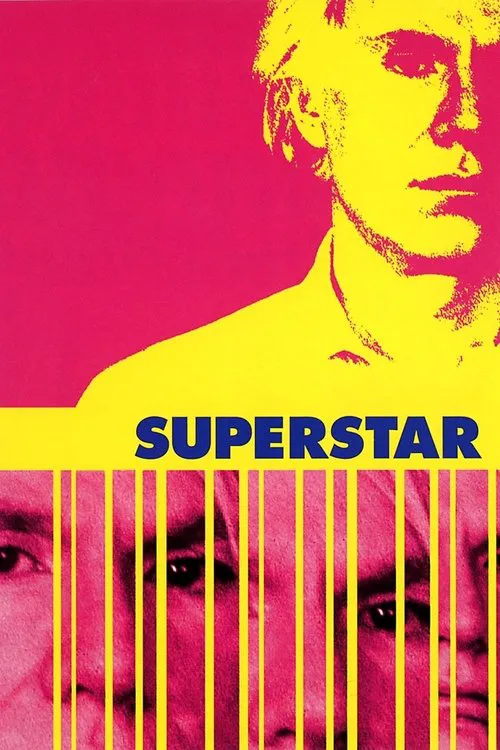Superstar: The Life and Times of Andy Warhol

Plot
The film "Superstar: The Life and Times of Andy Warhol" delves into the extraordinary life of Andy Warhol, one of the most influential artists of the 20th century. Born Andrew Warhola in 1928 in Pittsburgh, Pennsylvania, Warhol's upbringing was marked by a unique blend of poverty and artistic expression. His Slovakian parents, Ondrej and Julia, valued education and encouraged their children to develop their artistic skills. Warhol's father, a carpenter and a man of simple means, instilled in his son a love for the arts, often taking him on trips to the Carnegie Museum of Art. As a child, Warhol displayed a remarkable aptitude for drawing and painting. He was a curious and creative individual who drew inspiration from the world around him. His love for the arts continued to grow as he entered high school, where he developed an appreciation for commercial art. After completing his high school education, Warhol enrolled in the Carnegie Institute of Technology (now Carnegie Mellon University) to study pictorial design. It was during this time that Warhol's interests in advertising and illustration were nurtured. After graduating from college in 1949, Warhol moved to New York City in 1949, where he was drawn to the vibrant art scene and the city's fast-paced lifestyle. Warhol initially worked as a commercial illustrator, creating designs for magazines and advertisements. This period saw the emergence of his style, which blended elements of pop culture, advertising, and fine art. His work, which was characterized by its simplicity and use of everyday imagery, gained recognition within the art world. In the early 1960s, Warhol's artistic vision began to take shape. He started producing silkscreen prints of consumer products, which would become a hallmark of his style. These prints, often featuring Campbell's Soup cans and Coca-Cola bottles, challenged the conventional notion of art and questioned the role of consumerism in modern society. As his reputation grew, so did his influence on the art world. It was during this time that Warhol founded "The Factory," his legendary studio and party venue. Located in Manhattan, The Factory became a hub for creatives, artists, and musicians. Warhol's vision for The Factory was a utopian space where art and life blended seamlessly together. The building served as a place for Warhol and his colleagues to experiment with their art, explore new ideas, and push the boundaries of traditional art forms. The Factory was more than just a studio; it was a community, a creative incubator, and a gathering place for like-minded individuals. It attracted a diverse range of artists, musicians, and performers, including the Velvet Underground, Lou Reed, and Nico. The Factory became a symbol of the counterculture movement, a space where creativity and nonconformity thrived. As Warhol's influence continued to grow, so did his notoriety. He became a cultural icon, a celebrity in his own right. His ability to blend art and commerce created a new paradigm for the art world. Warhol's fascination with celebrity culture and his use of everyday images helped to democratize art, making it more accessible to a wider audience. Throughout the documentary, we hear from some of the people who knew Warhol best, including Dennis Hopper, David Hockney, and Roy Lichtenstein. Each of these individuals offers a unique insight into Warhol's personality, his creative process, and his enduring influence on the art world. Hopper, who knew Warhol from his days at The Factory, recalls Warhol's love for experimentation and his ability to push boundaries. Hockney, who became a close friend of Warhol's, describes Warhol's fascination with celebrity culture and his ability to capture the essence of his subjects. Lichtenstein, who was a close friend and fellow artist, remembers Warhol's ability to challenge conventional notions of art. He recalls Warhol's use of everyday imagery and his ability to turn the mundane into something extraordinary. Each of these testimonials offers a glimpse into Warhol's complex personality, his creative vision, and his lasting impact on the art world. As the documentary draws to a close, it becomes clear that Warhol's legacy extends far beyond his art. He helped to redefine the boundaries of art, making it more accessible to a wider audience. His influence can be seen in everything from advertising to film, and his legacy continues to inspire artists and creatives around the world. Warhol's life was a testament to the power of creativity and the human spirit. He was a true original, a master of his own destiny. His art continues to inspire and provoke, a reminder that even in the most mundane moments, there lies the potential for something extraordinary to emerge. As the documentary comes to a close, we are left with a sense of awe and wonder, a sense that we have only scratched the surface of this extraordinary individual.
Reviews
Recommendations



